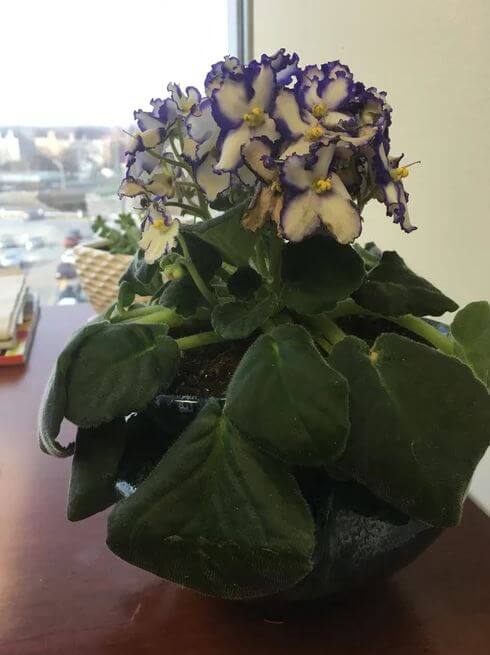Last Updated on October 3, 2023 by a Friendly Gardener
A delightful and popular houseplant, the African Violet when well cared for can grace your home with lovely blooms year-round. But this plant is not merely appreciated for its graceful flowers alone. Eye-catching velvety-like foliage is the other reason for its popularity among indoor gardeners. So, when leaves turn dull and begin to droop, alarms go off. Your plant is communicating that it has a problem and needs your help, but it’s up to you to determine what that problem is.
A native of the east African tropics, the Saintpaulia is now botanically known as Streptocarpus. They thrive in warm, humid environments with bright light. So, what could be stressing your plant enough to cause droopy African violet leaves? Here are three of the more common causes.
Overwatering

When African violet leaves turn soft, droopy, and a bit mushy, overwatering is usually the problem. These plants have very delicate root balls that will not tolerate waterlogged soil. If your plant’s root system is left to stand in soggy soil, it will suffocate and drown. Root rot can set in and be fatal when left unattended. Droopy leaves are one of the first symptoms that your African violet has been overwatered followed by yellow leaves, leaf drop, and inhibited growth. The soil will feel soggy, and the roots may appear to be black and mushy. They may emit a foul smell as well.
Trim off all mushy, dead, or droopy foliage. These leaves will not be able to recover yet they will continue to sap energy. Prepare to repot your plant. Remove it from its container and gently remove soil from the root system. Trim away diseased roots and treat the remaining roots with a fungicide before replacing them in fresh soil that is specifically formulated for African violets. If you need to remove a significant part of the root system, transfer your plant to a smaller container as these plants like to be kept a little root bound.
Generally speaking, African violets need only weekly watering. Also, consider the use of a self-watering pot or container.
Underwatering
African violet leaves drooping can also be the result of a lack of water. Leaves can quickly turn dull and begin to wilt if your plant becomes dehydrated and thirsty. Droopy leaves will not be the only symptom of underwatering. Dehydration will cause leaves to curl inward and turn crispy. The soil bed will appear to be bone dry and will appear to shrink and separate from the sides of the container. Your plant’s pot will also feel lighter when lifted.
If you notice the symptoms of underwatering early enough, it’s an easy problem to fix. Give the plant a drink. The recommended technique for watering African violets is from the bottom. With this method, the plant will absorb what it needs and no more. Place your plant in the sink or a tub with a shallow amount of water. Leave it to absorb water for about half an hour. If all the water is gone from the tub, add a little more and leave the plant for another 10 minutes. When you remove your plant from the water source check to see if any excess water needs to drain before returning the plant to its favorite spot. Always allow your plant to dry out before watering anew.
Excessive Sunlight Exposure
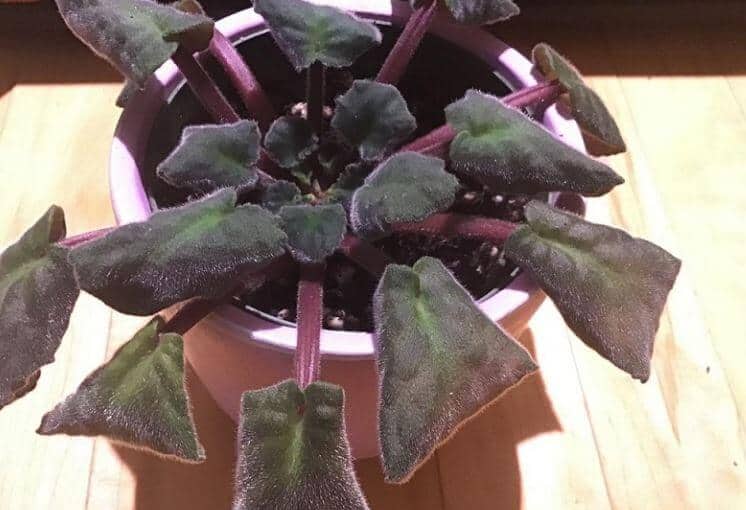
Too much sunlight can also be the cause of droopy leaves. This may seem strange for an African tropical plant, but these plants grow underneath a canopy of taller vegetation, so their natural habitat provides diffused or filtered light. Direct sunlight can be too harsh for foliage. You’ll be able to identify if your plant is receiving too much sun, not by drooping leaves alone but because foliage will turn yellow and crispy and may curl at the edges. You may also see evidence of sun scorch on foliage as these plants are susceptible to sunburn. You’ll see burn spots on foliage. Excessive sunlight can also cause blossoms to fall off or to turn crispy and brown.
To remedy this problem, move your plant to a shady spot that offers bright, indirect light. Avoid sunny windowsills or shelves.
Other Causes of African Violet Droopy Leaves
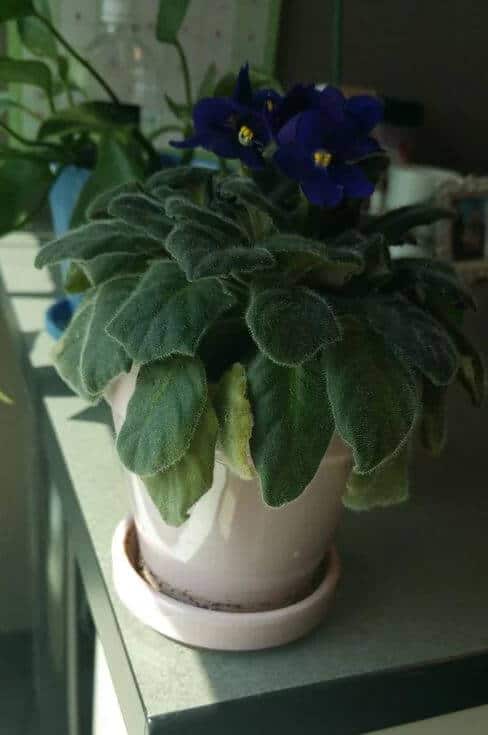
Three other environmental conditions that can cause your plant’s leaves to droop include
• Overfeeding
The appearance of white crystals on the soil bed top together with drooping leaves may indicate that your African Violet is reacting to a salt buildup from overfertilization. Flush out your plant’s soil bed completely but make sure to keep the foliage dry. When your plant shows new growth, you can start feeding with a fertilizer diluted to half strength.
• Excessively Hot Environment
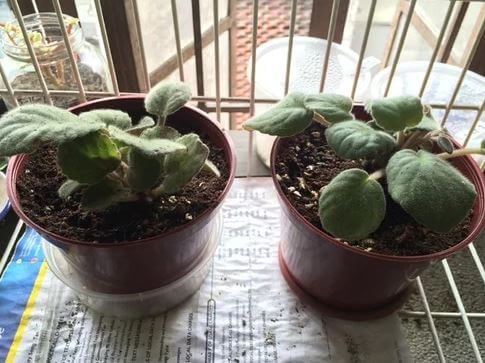
If your African violet is in an exceptionally hot spot, the foliage may begin to turn crispy and somewhat brown while it droops. If your plant appears as though it is wilting and may collapse, you should move your plant to a new cooler location. The ideal environmental temperature should measure approximately 70°F.
• The Environment Is Too Cold
African violet leaves drooping can also indicate that your plant is too cold. Leaves will droop and shrink. Your plant should not be placed in drafty windows or hallways. When watering, avoid using cold water. Use room temperature or tepid water to prevent shocking your plant’s root system.
African Violet Wilting Leaves
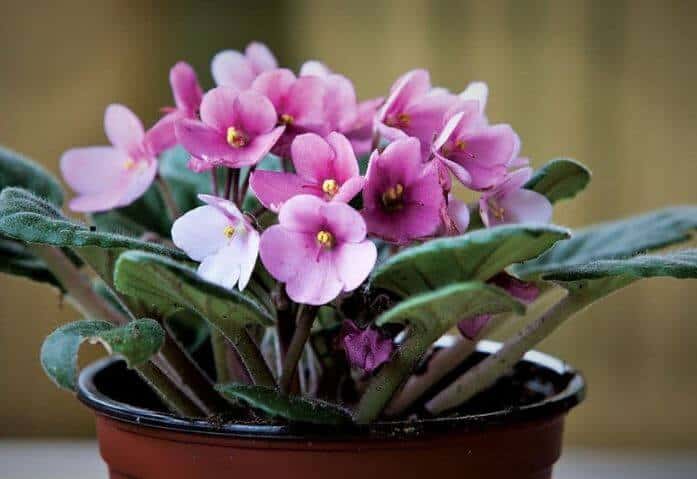
The occasional wilting of leaves is also not uncommon and can be due to several factors. The most common reason is a lack of humidity. As tropical plants, they need generous humidity to thrive. Consider using a space humidifier or a pebble tray underneath your plant’s pot especially if you have centralized heating or air conditioning that may contribute to dry air.
It is not recommended that you mist the foliage as this can cause leaves to spot. Also, avoid watering the plant’s crown because African violets are also susceptible to crown rot. Water at the soil level underneath the plant’s foliage.

